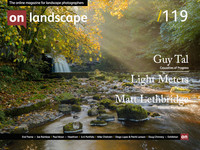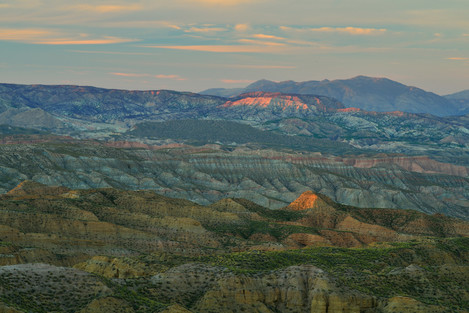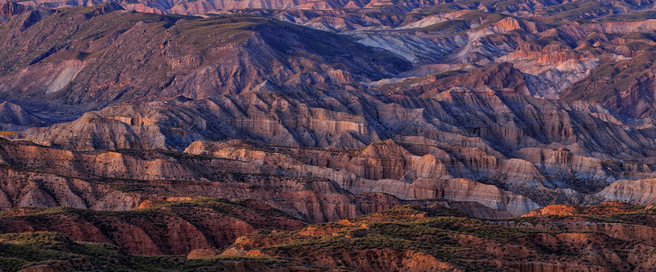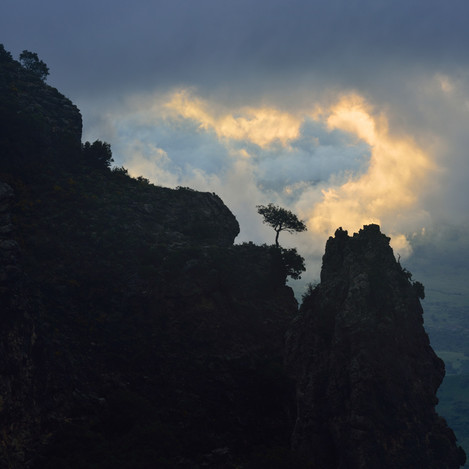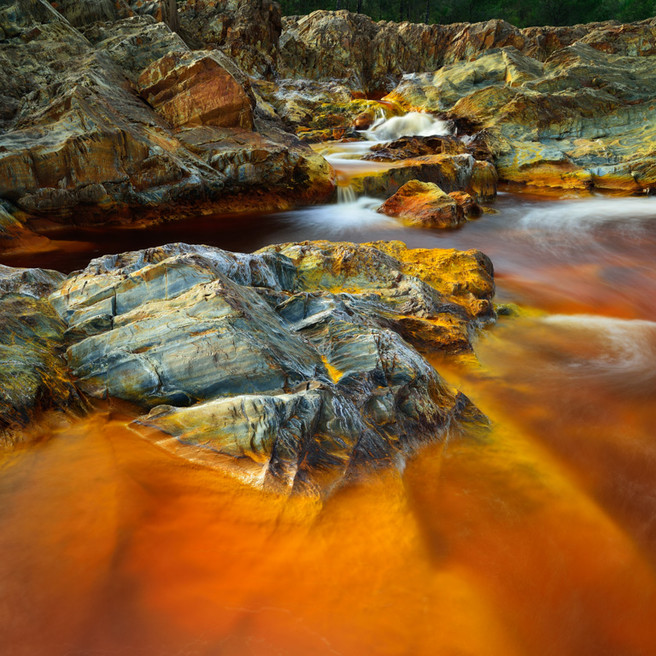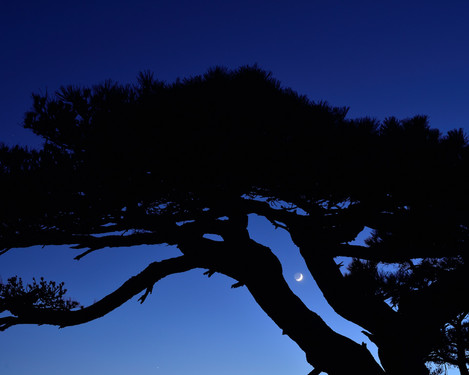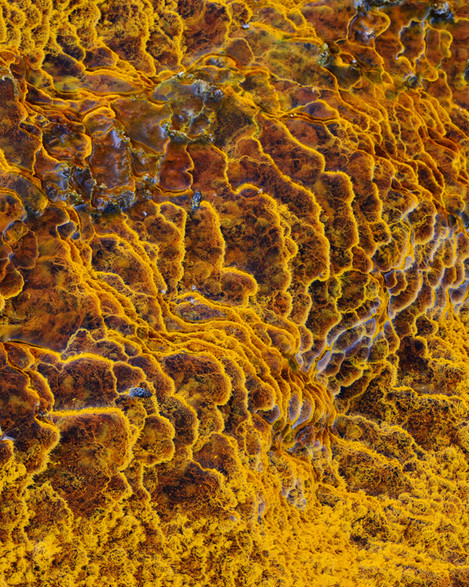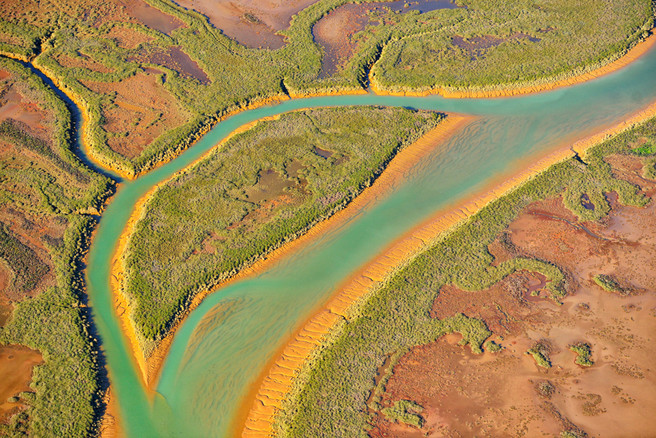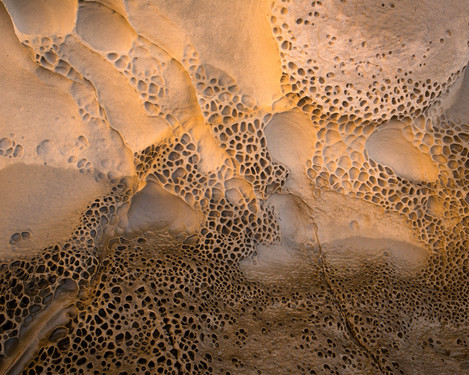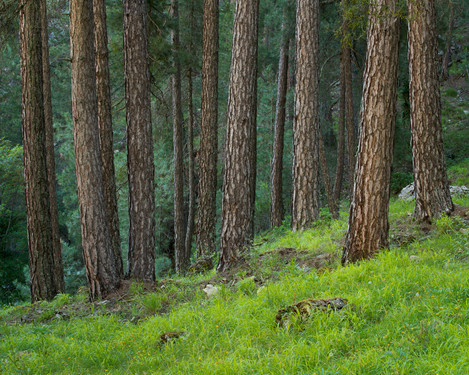Andalusia - a world of possibilities

Diego Lopez
Diego López is a Spanish nature photographer whose story begins more than fifteen years ago, in an enclave of exceptional beauty and wildlife, the Doñana National Park. His obsession with showing what has never been captured before undoubtedly reflects his perfectionist nature and portrays a huge work of prospecting and search for new locations. He is considered to be one of the pioneers of nature photography tourism in Spain after setting up his nature photography business Wild Photoescape.

Patrik Larsson
Beginnings
As a child, my father instilled his love of nature and Andalusia in me. We had a house in the countryside, and I remember spending hours playing outdoors there. I always followed my father in his search for hidden natural landscapes while he conveyed to me all his knowledge. This knowledge gave me an important foundation in an understanding of the environment, which was very useful in my beginnings with nature photography. In fact, something that keeps attracting me as much as the photography is the discovery of new natural environments.
However, it was not with landscape photography with which I began my wanderings. I live in Seville, a few minutes from one of the largest nature reserves in Europe where you can observe more than 300 species of birds a year, being a mandatory stop for migratory birds on their way between Europe and Africa. Doñana National Park offers endless possibilities for wildlife and landscape photography. It is a biological reserve where several species remain endangered, such as the Iberian lynx.
I love its beauty, its light, its sunsets in the marshes or dunes. When I discovered this paradise, I spent years obsessed with this place. At that time I had always thought that wildlife photography was much more complicated than landscape photography. However, I realised that to publish an article about birds, it was necessary to add images of the natural environment in which they lived. It was then that I discovered that it was not at all easy ...
It was not as simple as to place the camera and take the picture. I found a whole world of possibilities, and I understood that this type of photography that I had perhaps underestimated technically in my early days, was infinitely more complex. First, because you never know how a sunset will be, what colour the sky is, the light, the colours of nature ... every day is totally different from the day before. And of course, on the other hand, one sees the landscape before it, admire it, but then when you try to capture it in an image is not easy. Thus, a long process of learning and research began.
Andalusia and my Evolution
I began to explore this area and found that Andalusia offered me endless possibilities. I also began to notice that I sometimes saw photographs of important foreign photographers, points of reference known to all, and tended to find a similar place in Andalusia. Was I getting obsessed? Maybe a little ... but what it really happened is that in Andalusia you can find a wide variety of landscapes; we have 20% of the planet's biodiversity, which is a great percentage .. This is one of the largest protected areas in Europe. A fact that we often forget as Andalusian people but I think it is very important to develop that awareness of value and respect towards our own land.
Few places in the world can offer this landscape and biological diversity in such few kilometres. You can see the coast, the Mediterranean forest, the Atlantic forest, the jungle, the mountain, high mountain areas, the desert, sub-desert, the countryside.
That is perhaps one of the best claims of Andalusia as a destination for nature photography, in just 30 minutes we can go from shooting a spectacular coastline to a foggy forest that can move us to Costa Rica, with lots of relict vegetation. Or go from doing mountain photography with snow covered trees to move to a sub-desert in less than 40 minutes, with a landscape that can move us to Utah in the United States or even in some areas, too much better-known canyons that we have here but whose features are strikingly similar.
These possibilities led me to explore all kinds of landscapes and not to specialise in a particular one but the challenged me to explore what I could draw from each type of scenario. I wanted to portray the Andalusian landscape, and that vision forced me to learn to photograph inside a closed forest, from a mountain or on a beach. More than an obligation it was something that I wanted, I knew I wanted to capture with my camera that diversity of landscapes.
The truth is that at first what seduced me most was the great landscape, open environments that transmit a lot. But soon, Rio Tinto appeared on my way.
For me it was a revelation; It is a unique place in the world, no doubt, a genuine realm of colour where I began to discover a landscape of closed frames; textures, details; sets of colours were transformed into abstract paintings or aerial photographs. Rio Tinto is the colour lab for the photographer.
Here I learned to notice details, and this moved to other environments and landscapes. It made me forget the great landscape only with wide angle lens and start using other lens. It helped me to open my vision and showed me that there were not only landscapes made with a wide angle lens, but there were also landscapes with 70-200mm or even with a 400mm lens. I began to see new images where there was nothing before. It was an evolution in my view and my photographic style. (Read more about Diego's photography in our featured photographer interview)
So, I continued to develop my technique in this line. Later, I had the opportunity to meet great European photographers, thanks to Wild Photoescape, the photographic nature tourism company in Andalusia that I manage. Throughout the three short years of life of this project, we have had the opportunity to perform various collaborations with other foreign photographers, organising photo expeditions both in Andalusia and in their countries of origin. In one of these collaborations, I met my friend and passionate landscape photographer, Patrik Larsson, who has undoubtedly been an influence on my photographic perspective.
Patrik has a very marked and personal landscape style; I noticed that his pictures transmitted a lot, I discovered another vision I was not aware of. This meant for me an immersion to a more intimate and closed landscape. Patrik is also a very technically prepared photographer that gave me a lot of knowledge.
It is curious that we are constantly exposed to different stimuli through the network; different trends, styles, techniques and ways of understanding this art and yet has nothing to do with the fact that a person shows you his perspective face to face, on a site that you have been photographing your whole life and yet within minutes one can make you change your focus, your vision ... showing you those details that you have never seen and you could probably never get to internalise both through a computer screen and outside the own natural environment that surrounds you.
That is why I organise and enjoy so much the collaborations between professionals from different backgrounds, styles and ways of understanding the nature photography. I think the site can not only make us evolve in our style, but also the vision of others in our own environments may be crucial. Patrik is an example of how a Swedish photographer can interpret Andalusia.
Patrik Larsson
Before I got in contact with Diego Lopez and saw his landscape images from Andalusia, I only associated the region with sun, white houses, almond trees, beaches and sangría. I think most people do.
Nothing could be more wrong, though, and I am so happy to have met Diego and to join him on several tours in different parts of Andalusia.
What strikes me the most about this region is that it offers so incredibly diverse landscapes.
After spending a week in Andalusia you get back home with images from untouched fog forests, the wetlands of Doñana, photogenic coastal areas with the Moroccan mountains in the background, desert areas, mountain views from Cazorla and Grazalema; and of course from Río Tinto – the very spectacular red river that you don’t find anywhere else. And if you are into intimate landscape photography like me, you’ll find plenty of opportunities for great images.
The best places in Andalusia for photography are not as easy to access as in other places, but it is absolutely worth the extra effort it takes to get to these places.
I would definitely recommend everyone to visit Andalusia for landscape photography. In fact, I think I had one of the best hours of photography in my life in the fog forest of Los Alcornocales.

